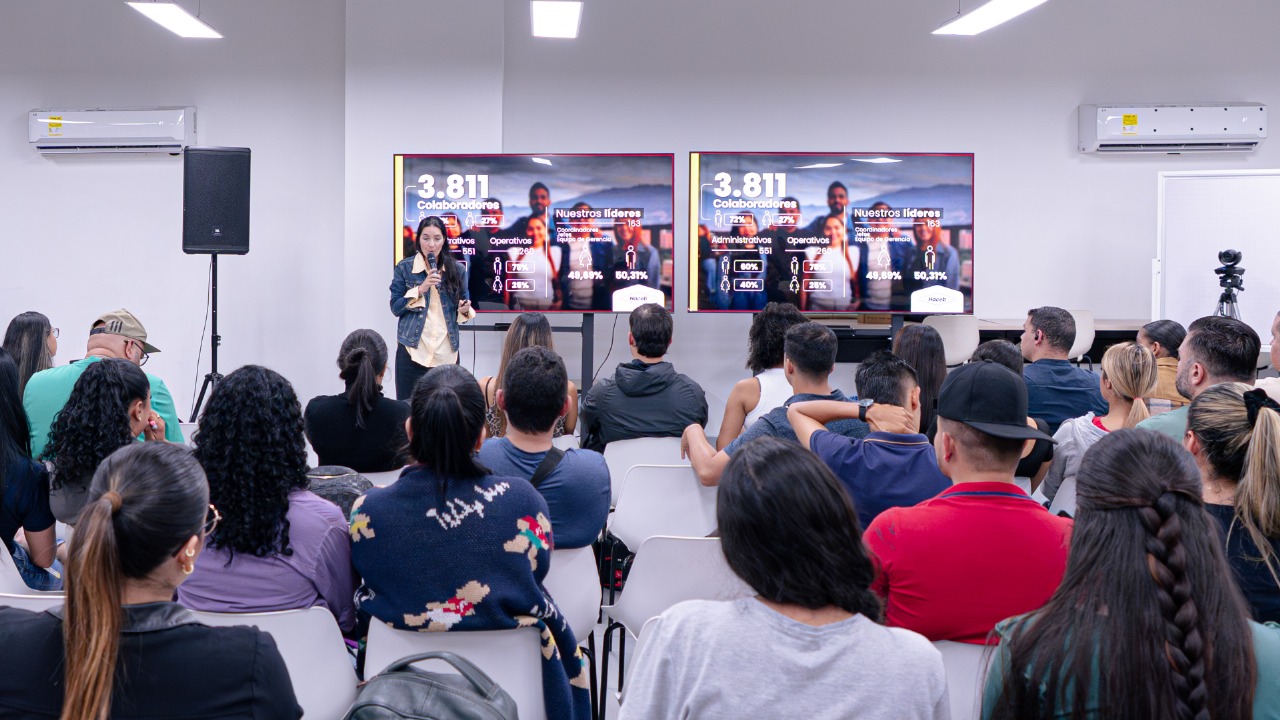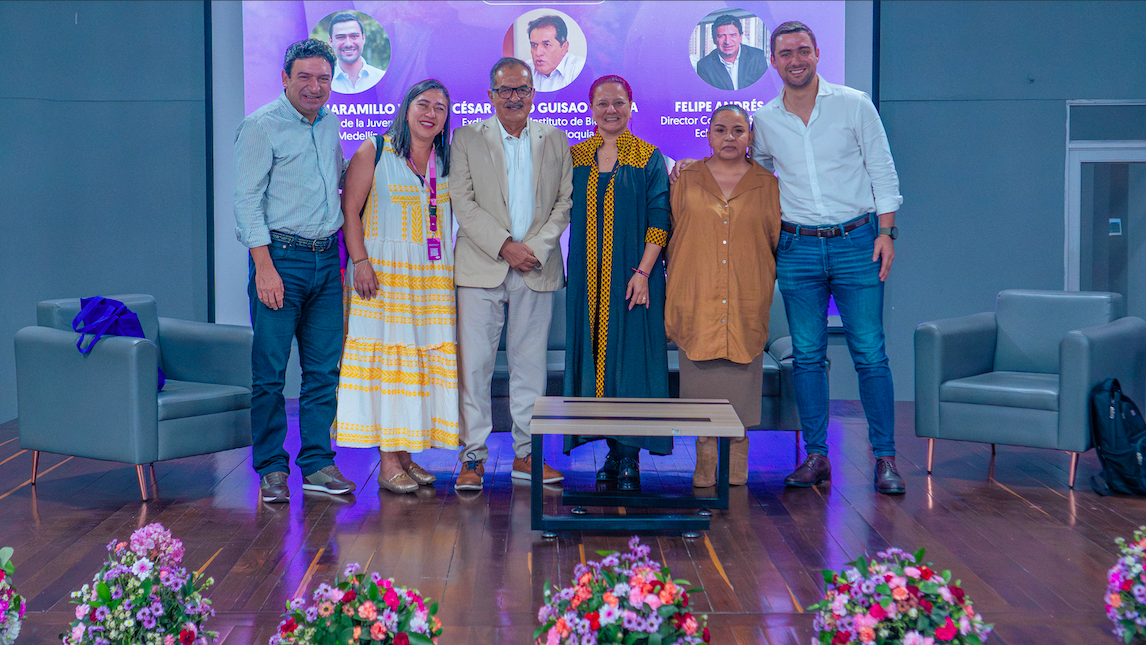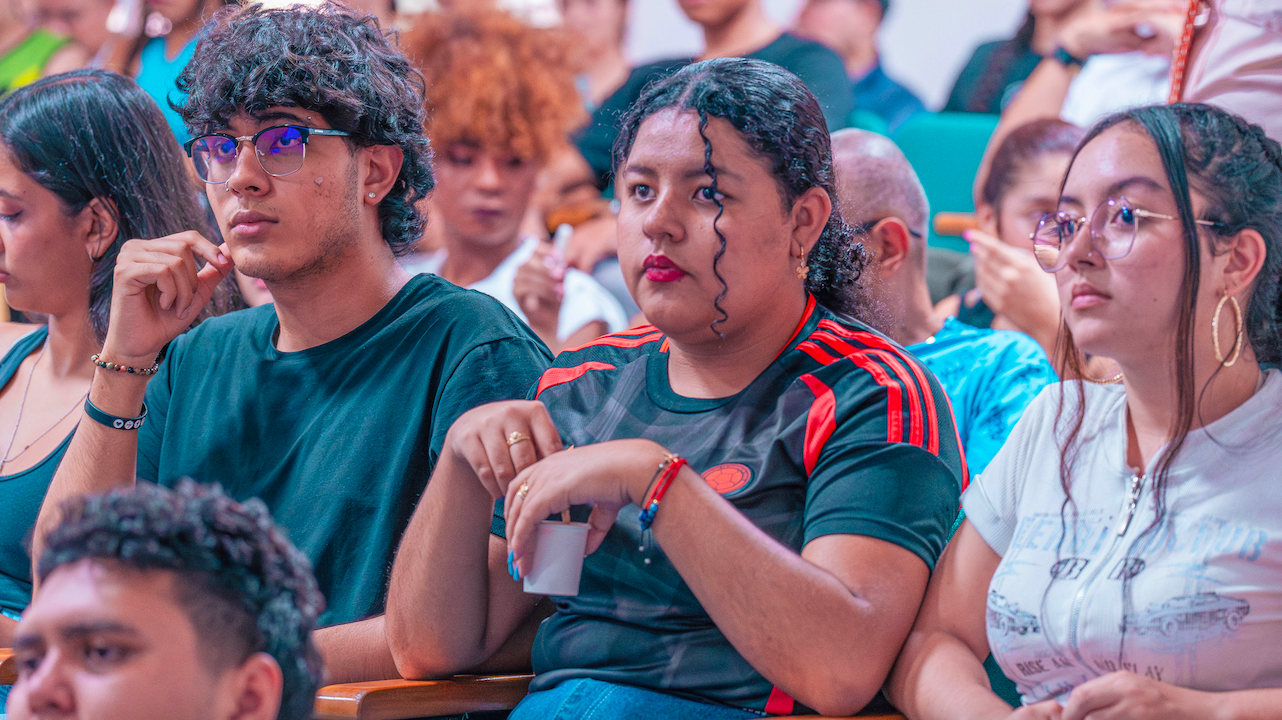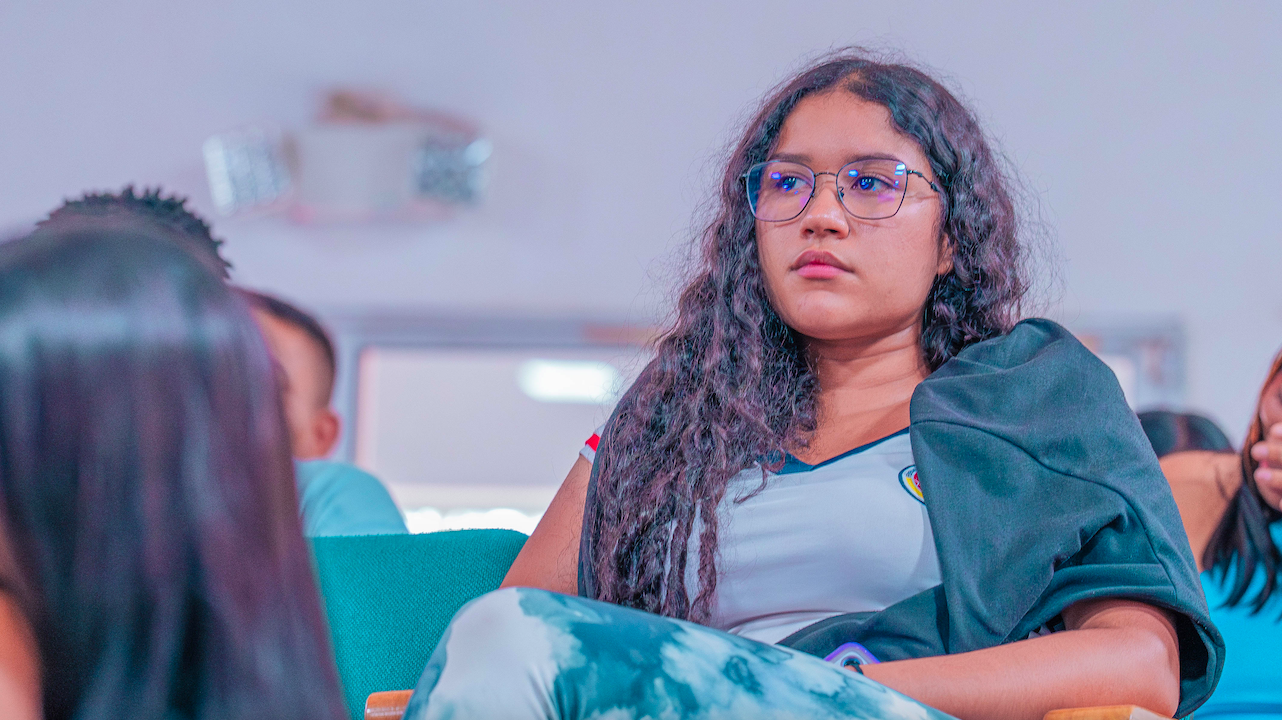En el marco de Todas las Mujeres 8M, en reconocimiento a la pluralidad y a los derechos de la población femenina en el mes de marzo, el TdeA Institución Universitaria abrió un espacio para el Conversatorio académico: tres décadas hablando de juventud en Medellín.
Parte de los panelistas participaron en el primer Consejo Municipal de la Juventud (CMJ) hace 30 años o trabajan en la actualidad por esta población. Es así como se enriqueció el debate con figuras como César Guisao Varela, abogado, educador, exdirector del Instituto Colombiano de Bienestar Familiar y quien asumió cargos directivos y como asesor en temas de juventud en las administraciones municipal, departamental y nacional; Adriana Benjumea Rúa, actual directora de la Corporación Humanas, quien además trabajó en Naciones Unidas, abogada feminista y egresada del CEFA; Felipe Andrés Gil Barrera, director de la Corporación Gilberto Echeverria Mejía y exsecretario de Educación de Antioquia y de Medellín; y Ricardo Jaramillo Vélez, Secretario de Juventud de Medellín, quien también fue representante estudiantil y vocero en las instancias gubernamentales. El conversatorio contó con la moderación de Sonia Valle Graciano, subsecretaria de Despacho en la Secretaría de la Mujer.
“Hoy se cumplen 30 años de haberse elegido el primer Consejo Municipal de la Juventud en el mundo y fue en Antioquia, en Medellín, donde se eligió y aquí estos invitados que nos honran con estar en este conversatorio. No se puede hacer academia si no se conoce la historia de lo que fueron las luchas juveniles de esta ciudad”, resaltó Eliana Vanegas Zapata, directora de Bienestar Institucional del TdeA.
Guisao Varela dio apertura a la conversación describiendo un panorama del Medellín de hace 30 años, una ciudad profundamente dividida, con una gran desigualdad en acceso e infraestructura educativa, deportiva y de salud, especialmente en sectores vulnerables como la zona nororiental. Muchos jóvenes fueron reclutados por actores armados, aumentando los índices de drogadicción, sicariato y homicidios. Ante esta crisis, se creó una Consejería Presidencial, dando origen a la Oficina de Juventud. Por primera vez, líderes juveniles de las 16 comunas y cinco corregimientos se reunieron en un espacio de diálogo impulsado por el gobierno, dando inicio a nuevas iniciativas de participación juvenil en la ciudad.
Gil Barrera destacó la resistencia juvenil ante la violencia y la muerte, materializada en propuestas sociales. En los años 90, la juventud de Medellín resistió activamente la violencia generada por el narcotráfico, organizando movilizaciones en las comunas como alternativas al conflicto. Su participación fue respaldada por ONGs como Corporación Región, Paisa Joven y Surgir, que impulsaron debates e investigaciones sobre juventud. La visibilización en medios de comunicación fue clave, con programas como Arriba Mi Barrio y Muchachos a lo Bien, además del apoyo de la prensa y canales comunitarios, que contaban cómo los jóvenes proponían la paz. Esta movilización sentó las bases para las libertades en el día hoy.
Adriana Benjumea recordó que hace 30 años, el mundo avanzaba en los derechos de la mujer y Naciones Unidas declaraba el Año de la Juventud. En Medellín resistía la violencia del narcotráfico, “era también una lucha por estar vivos, por estar vivas”, dijo. Sin redes sociales, las movilizaciones en las calles eran la principal forma de lucha, respaldadas por organizaciones como la Red Juvenil de Medellín. Aunque los movimientos sociales existían, no había una agenda de género o feminista consolidada, y la lucha principal era por la supervivencia y la dignidad en una sociedad que ofrecía pocas oportunidades. Así que nació el CMJ para activar esta conversación. A lo largo de estas tres décadas, la lucha ha evolucionado hacia la búsqueda de una educación de calidad, inclusiva y equitativa, reflejando los avances y retos en los derechos de los jóvenes y las mujeres en la ciudad.
El panel en pleno estuvo de acuerdo en que, pese a que hay asuntos por resolver, son más los retos que se han superado, gracias a una juventud activa en temas de participación social y política. “Me siento muy orgulloso, porque yo estoy viendo que hoy nosotros como jóvenes en Medellín podemos tener muchísimas oportunidades gracias a que tuvimos estos valientes, estos jóvenes que a pesar de tanta violencia decidieron alzar la voz”, acotó Jaramillo Vélez, quien abrió paso al tema de juventud en la actualidad.
El debate se nutrió con puntos de vista divergentes acerca del presente de la juventud, unos más optimistas y otros confesos pesimistas, los panelistas hablaron en este evento sobre esos retos añejos como la violencia, la inclusión y la cobertura estudiantil, aclarando por supuesto que nunca se acerca a la situación de hace tres décadas.
Jaramillo Vélez indicó que el tema ahora es la salud mental, pero cerró con optimismo el conversatorio. “Soy un hombre optimista, ¿saben? Yo veo a Medellín con mucho por resolver todavía, pero yo veo una Medellín incluyente, que cada vez tiene mayor tejido empresarial, cada vez tiene mayores oportunidades para los jóvenes de estratos 1, 2 y 3”, definió a la juventud actual como una generación consciente, global y adaptable, que debe seguir haciendo lo mejor desde la sociedad civil, la academia y contando con la institucionalidad.
![]()
The TdeA Talked About Youth Struggles in Medellín
In the context of All Women 8M, in recognition of the plurality and rights of the female population in the month of March, TdeA University Institution opened a space for the academic talk: three decades talking about youth in Medellín.
Some of the panelists participated in the first Municipal Youth Council (CMJ) 30 years ago or currently work for this population. Thus, the debate was enriched with figures such as César Guisao Varela, lawyer, educator, former director of the Colombian Institute of Family Welfare, who held leadership positions and served as an advisor on youth issues in municipal, departmental, and national administrations; Adriana Benjumea Rúa, current director of the Humanas Corporation, who also worked at the United Nations, feminist lawyer, and graduate of CEFA; Felipe Andrés Gil Barrera, director of the Gilberto Echeverria Mejía Corporation and former Secretary of Education of Antioquia and Medellín; and Ricardo Jaramillo Vélez, Secretary of Youth of Medellín, who was also a student representative and spokesperson in governmental instances. The discussion was moderated by Sonia Valle Graciano, Deputy Secretary in the Women's Secretariat.
"Today marks 30 years since the first Municipal Youth Council in the world was elected, and it was in Antioquia, in Medellín, where it was elected, and here are these guests who honor us by being in this conversation." "You cannot engage in academia without knowing the history of the youth struggles of this city," emphasized Eliana Vanegas Zapata, Director of Institutional Welfare at TdeA.
Guisao Varela opened the conversation by describing a panorama of Medellín 30 years ago, a deeply divided city with significant inequality in access to and infrastructure for education, sports, and health, especially in vulnerable sectors like the northeastern area. Many young people were recruited by armed actors, increasing the rates of drug addiction, contract killing, and homicides. In response to this crisis, a Presidential Advisory Office was created, giving rise to the Youth Office. For the first time, youth leaders from the 16 communes and five districts gathered in a government-driven dialogue space, initiating new youth participation initiatives in the city.
Gil Barrera highlighted the youth's resistance to violence and death, materialized in social proposals. In the 1990s, the youth of Medellín actively resisted the violence generated by drug trafficking, organizing mobilizations in the neighborhoods as alternatives to the conflict. Their participation was supported by NGOs such as Corporación Región, Paisa Joven, and Surgir, which promoted debates and research on youth. The visibility in the media was key, with programs like Arriba Mi Barrio and Muchachos a lo Bien, in addition to the support from the press and community channels, which reported on how the youth proposed peace. This mobilization laid the foundations for the freedoms we have today.
Adriana Benjumea recalled that 30 years ago, the world was advancing in women's rights and the United Nations declared the Year of Youth. In Medellín, they resisted the violence of drug trafficking, "it was also a struggle to stay alive, to stay alive," she said. Without social media, street mobilizations were the main form of struggle, supported by organizations like the Medellín Youth Network.
Although social movements existed, there was no consolidated gender or feminist agenda, and the main struggle was for survival and dignity in a society that offered few opportunities. So the CMJ was born to activate this conversation. Over these three decades, the struggle has evolved towards the pursuit of quality, inclusive, and equitable education, reflecting the advances and challenges in the rights of youth and women in the city.
The entire panel agreed that, despite there being issues to resolve, the challenges that have been overcome are greater, thanks to an active youth in social and political participation. "I feel very proud because I see that today, as young people in Medellín, we can have many opportunities thanks to these brave young people who, despite so much violence, decided to raise their voices," added Jaramillo Vélez, who introduced the topic of youth today.
The debate was enriched with divergent viewpoints about the present of youth, some more optimistic and others openly pessimistic. The panelists spoke at this event about those age-old challenges such as violence, inclusion, and student coverage, clarifying, of course, that it never approaches the situation of three decades ago.
Jaramillo Vélez indicated that the topic now is mental health, but he closed the conversation with optimism. "I am an optimistic man, you know?" I see Medellín with a lot still to resolve, but I see an inclusive Medellín, one that increasingly has a stronger business fabric, one that increasingly offers greater opportunities for young people from strata 1, 2, and 3," he defined the current youth as a conscious, global, and adaptable generation, which must continue to do its best from civil society, academia, and with the support of institutions.








